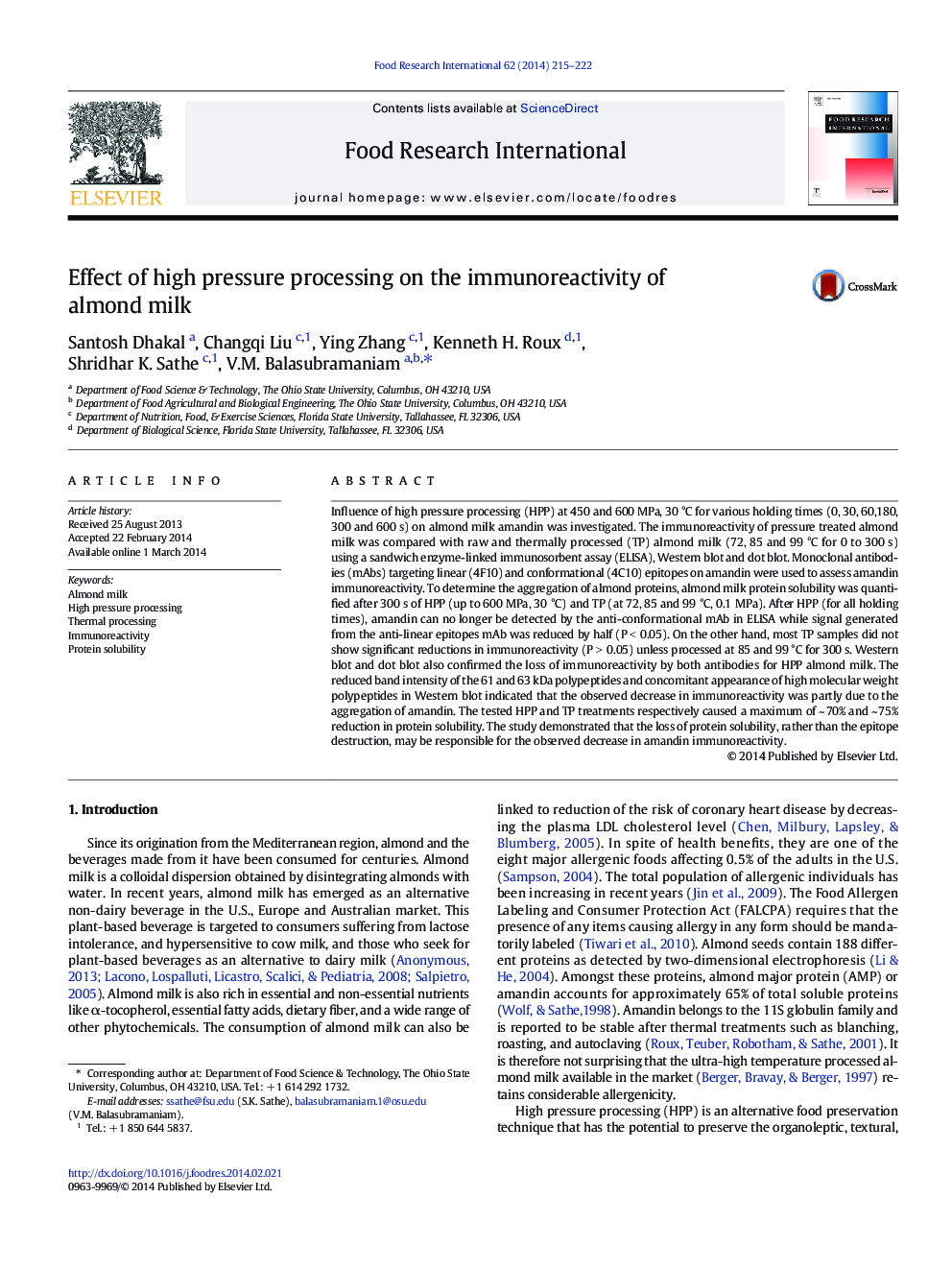| کد مقاله | کد نشریه | سال انتشار | مقاله انگلیسی | نسخه تمام متن |
|---|---|---|---|---|
| 6395785 | 1628482 | 2014 | 8 صفحه PDF | دانلود رایگان |
- Pressure effect on almond milk protein solubility and immunoreactivity was studied.
- Pressure and thermal treatments decreased protein solubility due to aggregation.
- High pressure processing destroyed some conformational epitopes.
- Pressure treated samples had lower residual immunoreactivity than thermal treatment.
Influence of high pressure processing (HPP) at 450 and 600 MPa, 30 °C for various holding times (0, 30, 60,180, 300 and 600 s) on almond milk amandin was investigated. The immunoreactivity of pressure treated almond milk was compared with raw and thermally processed (TP) almond milk (72, 85 and 99 °C for 0 to 300 s) using a sandwich enzyme-linked immunosorbent assay (ELISA), Western blot and dot blot. Monoclonal antibodies (mAbs) targeting linear (4F10) and conformational (4C10) epitopes on amandin were used to assess amandin immunoreactivity. To determine the aggregation of almond proteins, almond milk protein solubility was quantified after 300 s of HPP (up to 600 MPa, 30 °C) and TP (at 72, 85 and 99 °C, 0.1 MPa). After HPP (for all holding times), amandin can no longer be detected by the anti-conformational mAb in ELISA while signal generated from the anti-linear epitopes mAb was reduced by half (P < 0.05). On the other hand, most TP samples did not show significant reductions in immunoreactivity (P > 0.05) unless processed at 85 and 99 °C for 300 s. Western blot and dot blot also confirmed the loss of immunoreactivity by both antibodies for HPP almond milk. The reduced band intensity of the 61 and 63 kDa polypeptides and concomitant appearance of high molecular weight polypeptides in Western blot indicated that the observed decrease in immunoreactivity was partly due to the aggregation of amandin. The tested HPP and TP treatments respectively caused a maximum of ~ 70% and ~ 75% reduction in protein solubility. The study demonstrated that the loss of protein solubility, rather than the epitope destruction, may be responsible for the observed decrease in amandin immunoreactivity.
Journal: Food Research International - Volume 62, August 2014, Pages 215-222
